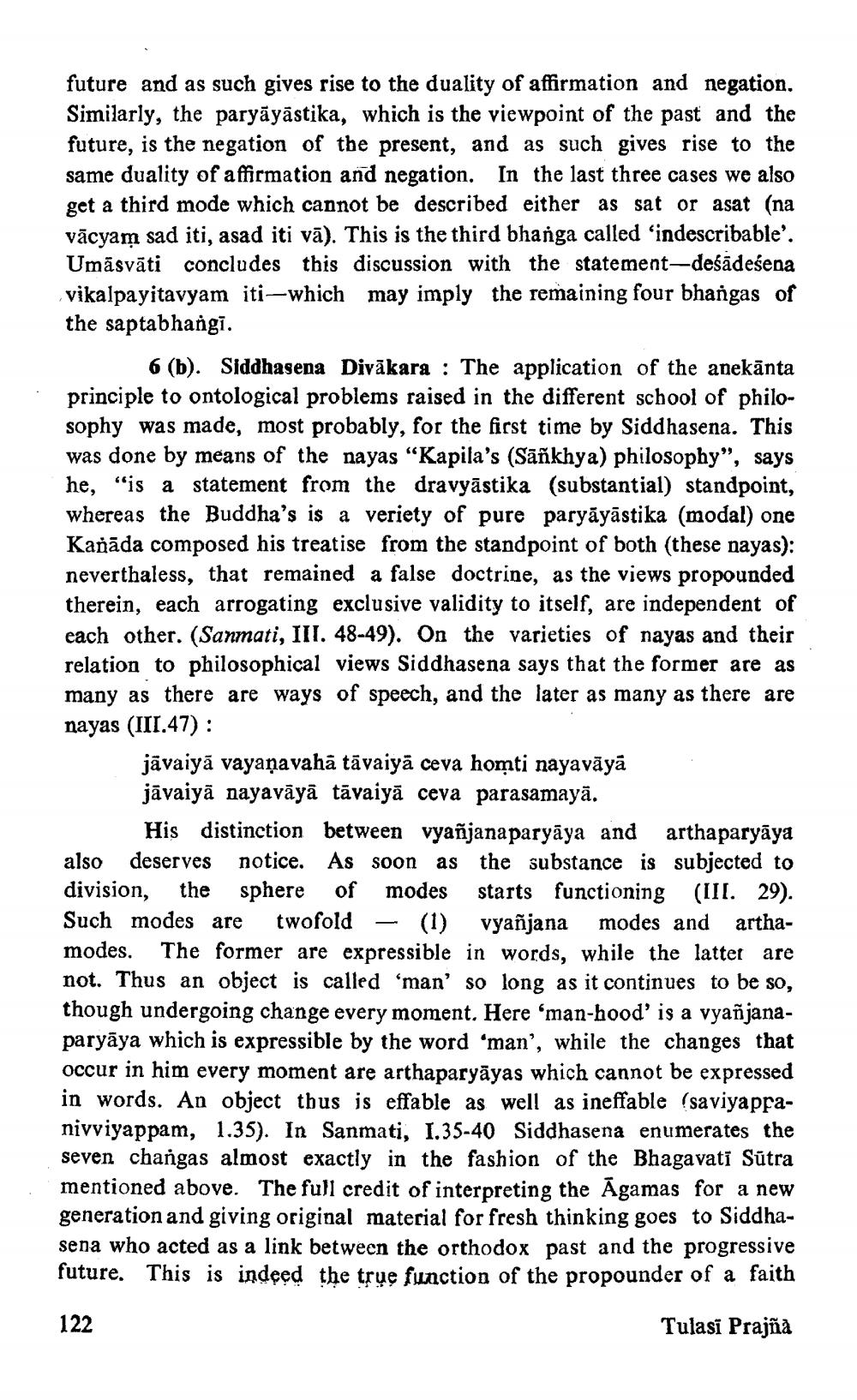________________
future and as such gives rise to the duality of affirmation and negation. Similarly, the paryāyāstika, which is the viewpoint of the past and the future, is the negation of the present, and as such gives rise to the same duality of affirmation and negation. In the last three cases we also get a third mode which cannot be described either as sat or asat (na vācyam sad iti, asad iti vā). This is the third bhanga called 'indescribable'. Umāsvāti concludes this discussion with the statement-deśādesena vikalpayitavyam iti-which may imply the remaining four bhangas of the saptabhangi.
6 (b). Siddhasena Divākara : The application of the anekānta principle to ontological problems raised in the different school of philosophy was made, most probably, for the first time by Siddhasena. This was done by means of the nayas “Kapila's (Sāñkhya) philosophy”, says he, “is a statement from the dravyāstika (substantial) standpoint, whereas the Buddha's is a veriety of pure paryāyāstika (modal) one Kanāda composed his treatise from the standpoint of both (these nayas): neverthaless, that remained a false doctrine, as the views propounded therein, each arrogating exclusive validity to itself, are independent of each other. (Sanmati, III. 48-49). On the varieties of nayas and their relation to philosophical views Siddhasena says that the former are as many as there are ways of speech, and the later as many as there are nayas (III.47):
jāvaiyā vayaņavahā tāvaiyā ceva homti nayavāyā jāvaiyā nayavāyā tāvaiyā ceva parasamayā.
His distinction between vyañjanaparyāya and arthaparyāya also deserves notice. As soon as the substance is subjected to division, the sphere of modes starts functioning (III. 29). Such modes are twofold – (1) vyañjana modes and arthamodes. The former are expressible in words, while the latter are not. Thus an object is called 'man' so long as it continues to be so, though undergoing change every moment. Here 'man-hood' is a vyañjanaparyāya which is expressible by the word 'man', while the changes that occur in him every moment are arthaparyāyas which cannot be expressed in words. An object thus is effable as well as ineffable (saviyappanivviyappam, 1.35). In Sanmati, 1.35-40 Siddhasena enumerates the seven changas almost exactly in the fashion of the Bhagavatī Sutra mentioned above. The full credit of interpreting the Āgamas for a new generation and giving original material for fresh thinking goes to Siddhasena who acted as a link between the orthodox past and the progressive future. This is indeed the true function of the propounder of a faith
122
Tulasi Prajña




